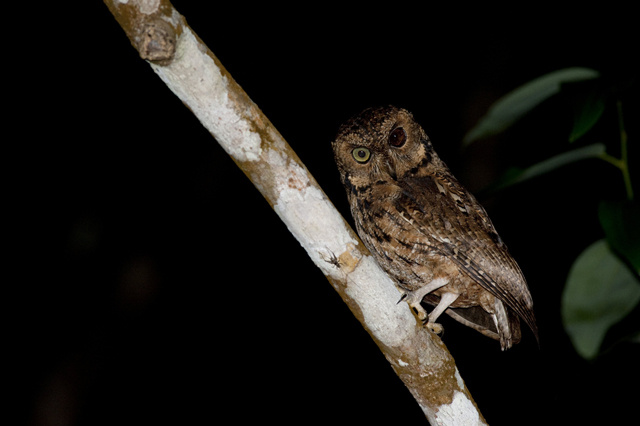National census to assess endangered species in Seychelles

The Seychelles scops owl is one of the species that the census seeks to provide updated information on. (File photo: Jeff Watson, Nature Seychelles)
(Seychelles News Agency) - A national census is expected to start over the course of this month to assess the endangered species of Seychelles. The annual exercise is being undertaken by the Ministry for Environment, Energy and Climate Change with the assistance of local consultants.
Ashley Dias, director for biodiversity conservation said the census seeks to provide updated information on some of the island nation’s threatened species.
“These are the Seychelles scops owl, Seychelles cave swiftlet, sea turtles, Seychelles sheath tailed bat, Seychelles white-eye, Seychelles kestrel. The new data collected will allow us to update existing information on their population and distribution,” explained Dias.
According to Dias, this will enable the ministry to assess the trends based on the latest threats to the species and develop and implement effective plans and conservation programmes. Dias told SNA that the animals listed are not the only endangered species in Seychelles – 115 islands in the western Indian Ocean.
“They are however the only ones the ministry contracts out annually as non-government organisations are working with other endangered species on other islands,” said Dias.
 |
| The green turtle is on the IUCN's list of endangered species. (File Photo: Seychelles Islands Foundation) Photo License: All Rights Reserved |
Naturalist Pat Matyot told SNA that it is crucial to have monitoring programmes to regularly check if the populations of endemic plants, animals and fungi are stable, increasing, or decreasing.
“Without monitoring programmes, there is no sure way of knowing how they are doing. If the populations go up, then this is good news; it means your conservation actions are getting results. If the populations go down, then it’s worrying,” explained Matyot.
Matyot said that if the population of any animal, plant or fungus is decreasing, it is important to find out why this is happening.
“And in some cases, we may be able to do something about it. For example, research may show that the drop in numbers is due to an introduced alien species that is feeding on the plant or animal concerned. We may try to use control measures against the alien pest. Without monitoring programmes you have no sure data to go by, to guide your actions,” added the naturalist.
The ministry is contracting consultants to undertake sea turtle and swiftlet monitoring on both Mahe – the main Island - and Praslin – the second-most populated island. While census of the other species will be done only on the main island.
Findings of the census will be used to update species action plans, improve future monitorings, produce updated graphs of roosting, nesting, feeding sites as well as developing protocols for sustainable activities such as tourism.
“In addition, the new information will allow us to develop existing species action plans, prepare extensive education and awareness-raising campaigns, update and review of existing legislation, provide training for staff, as well as funding for species conservation,” said Dias.





